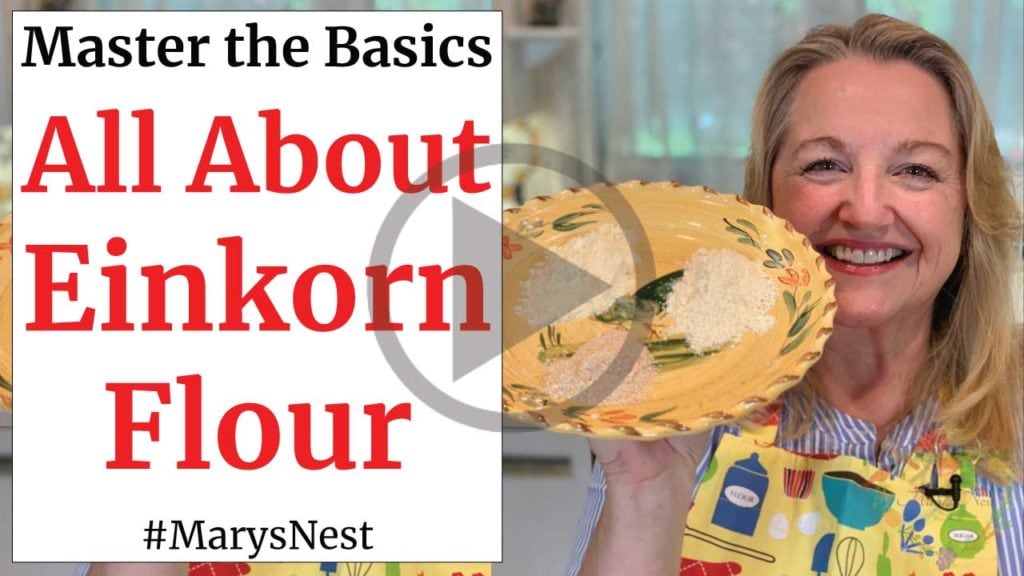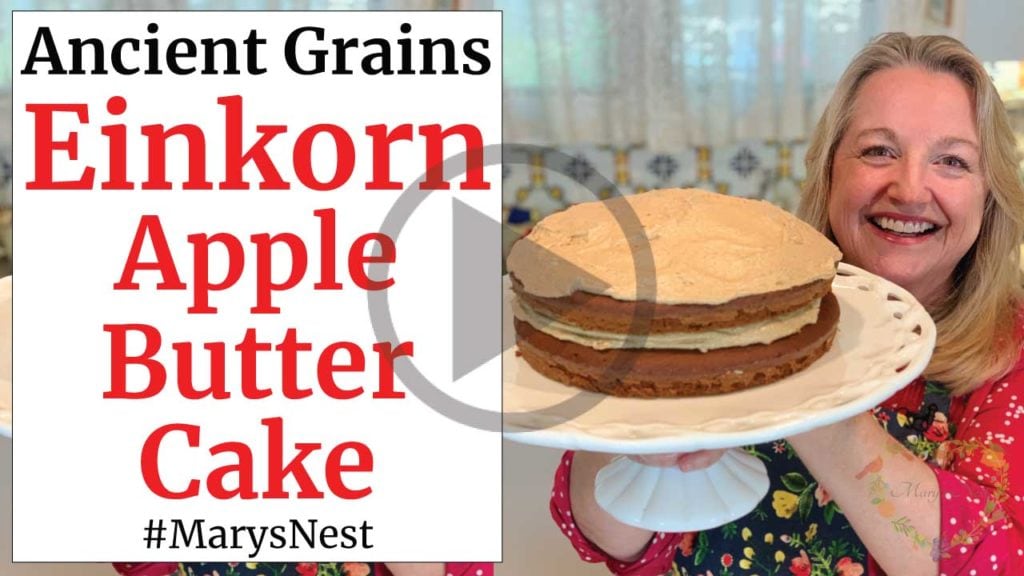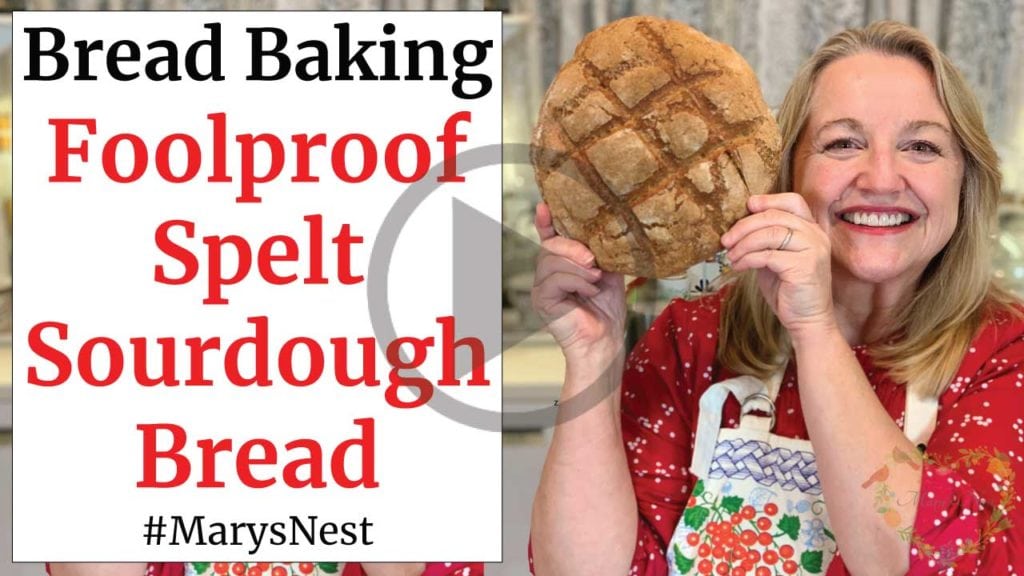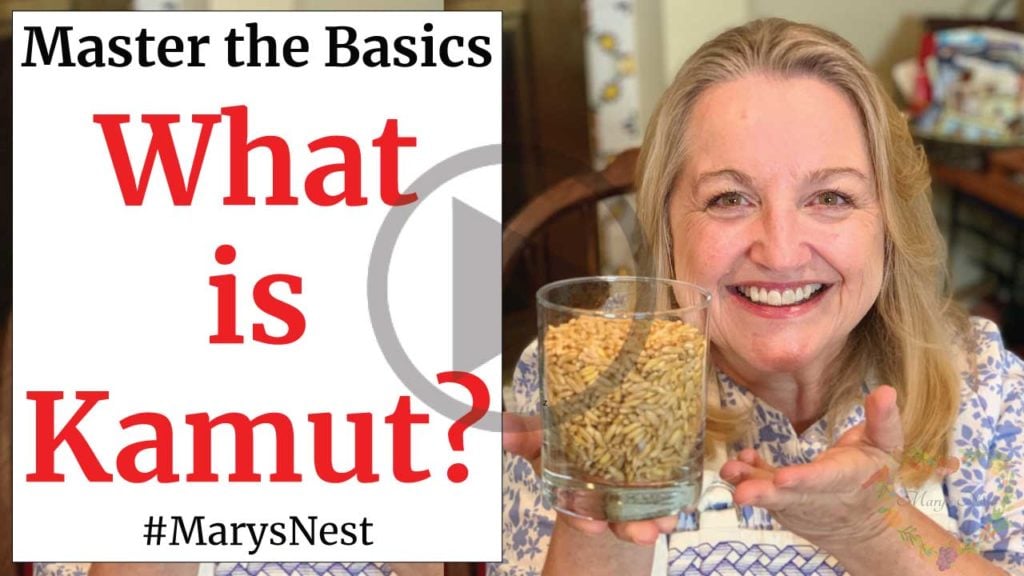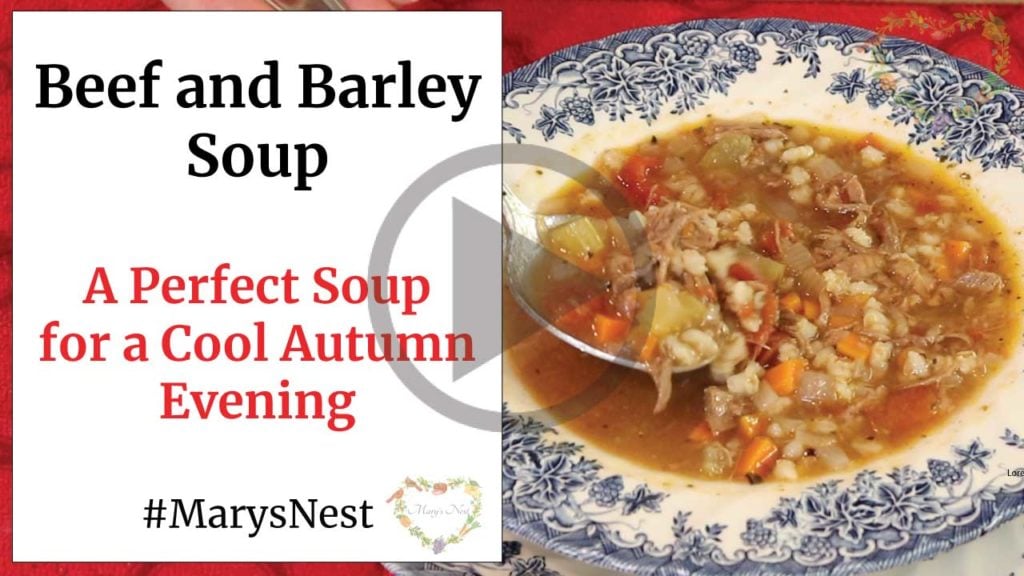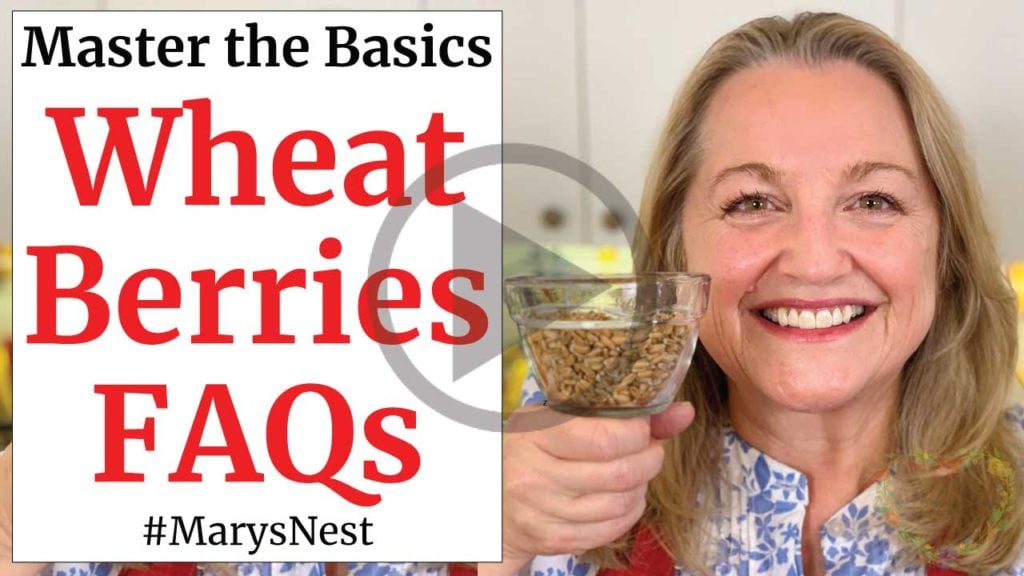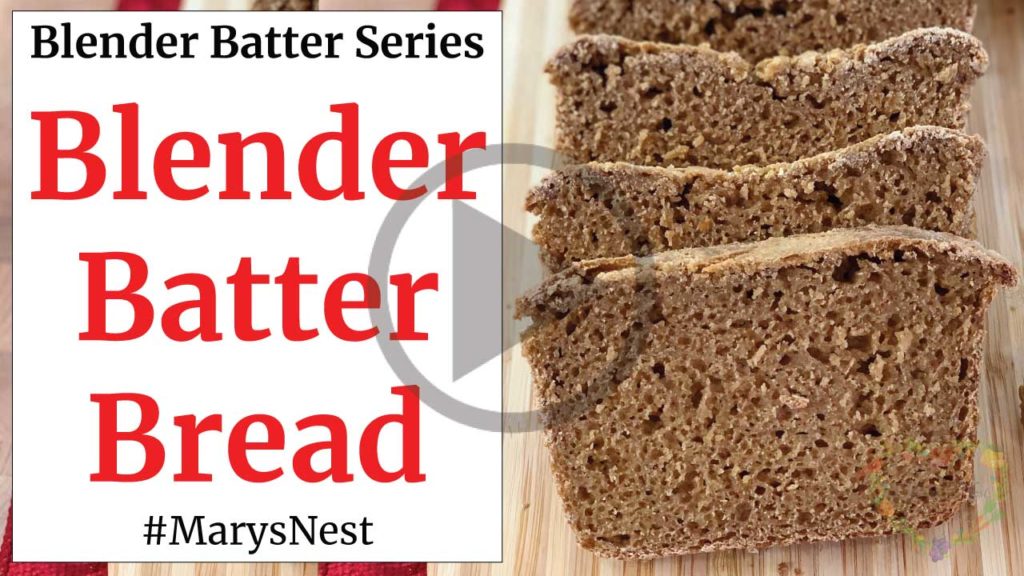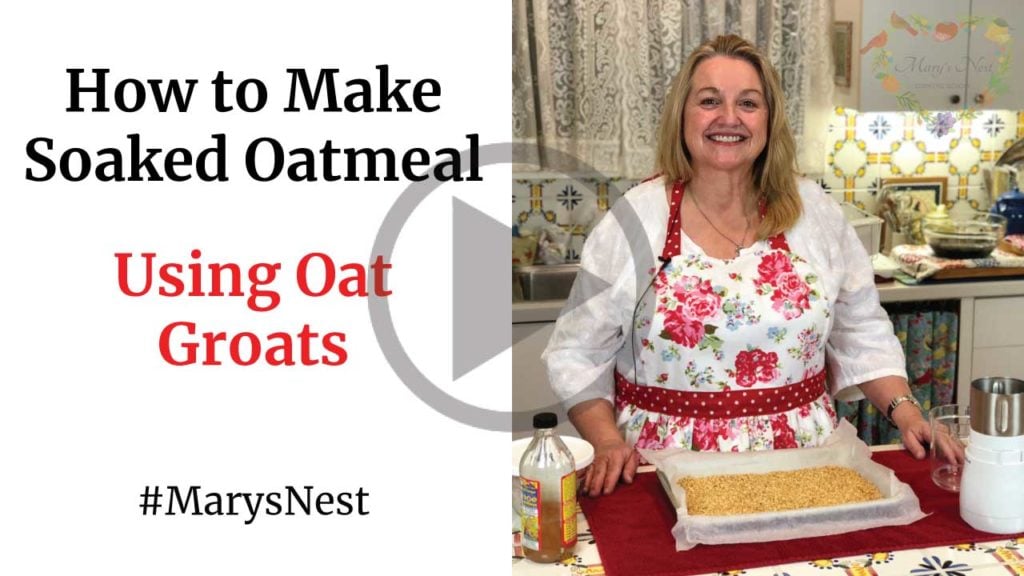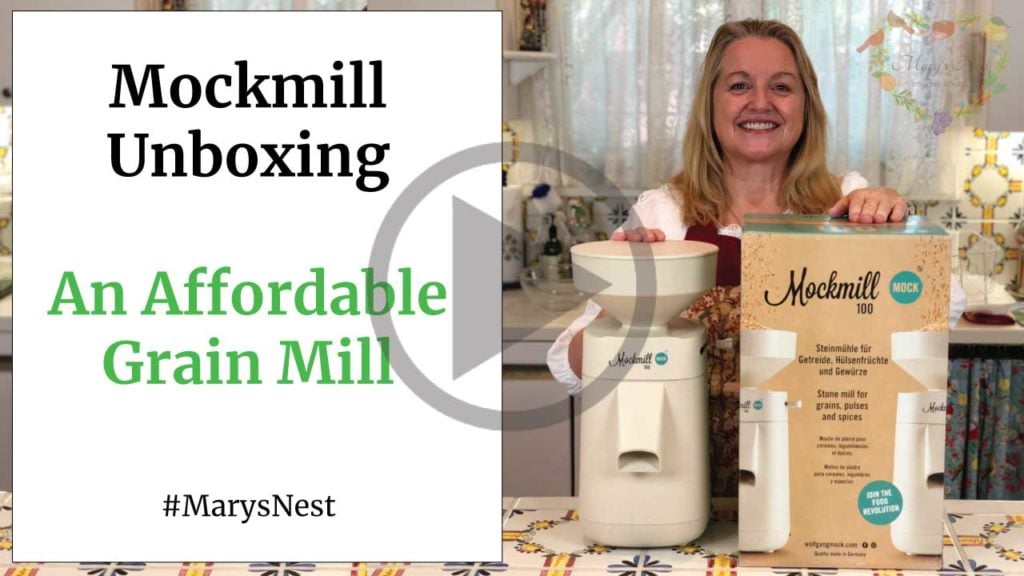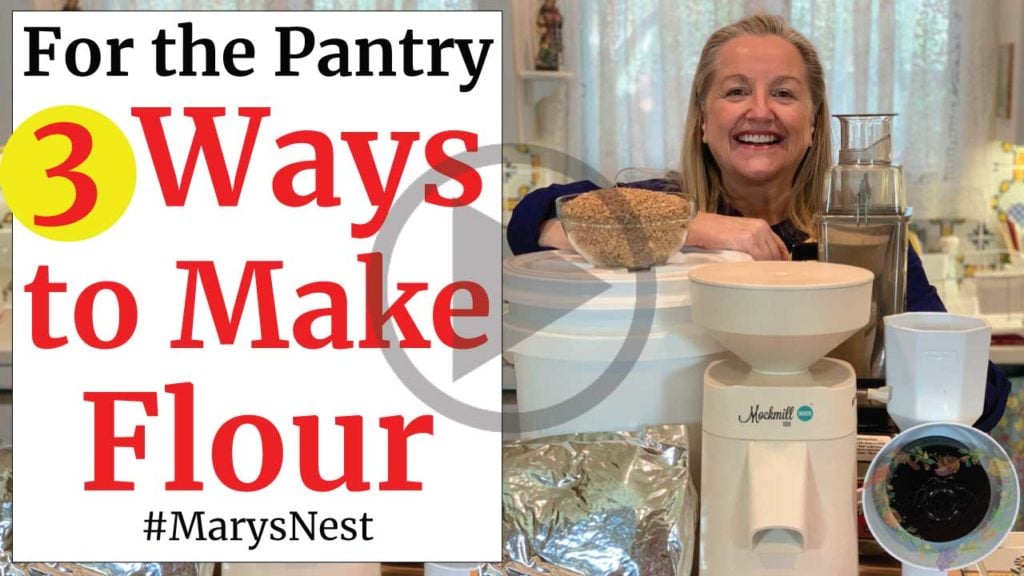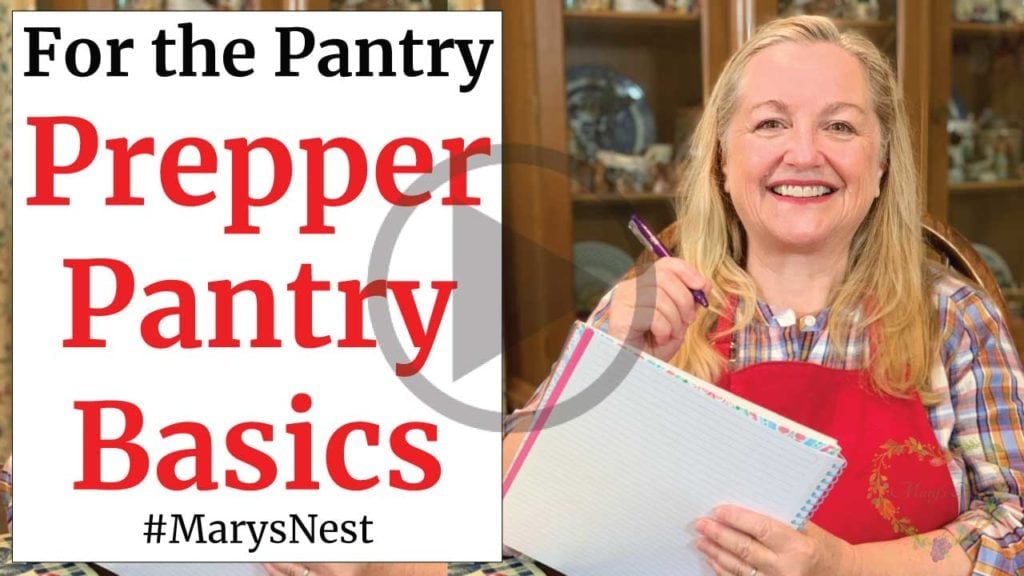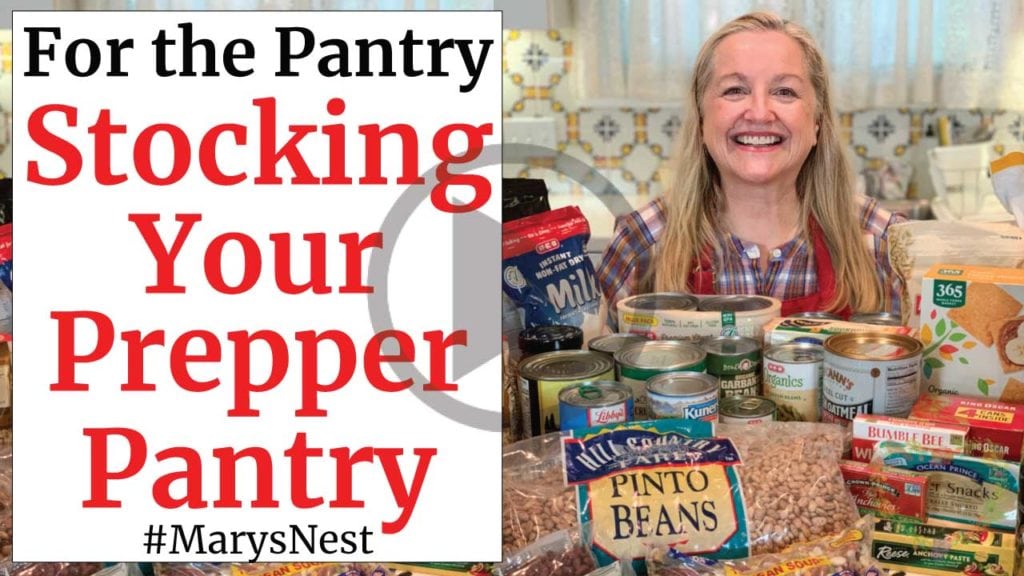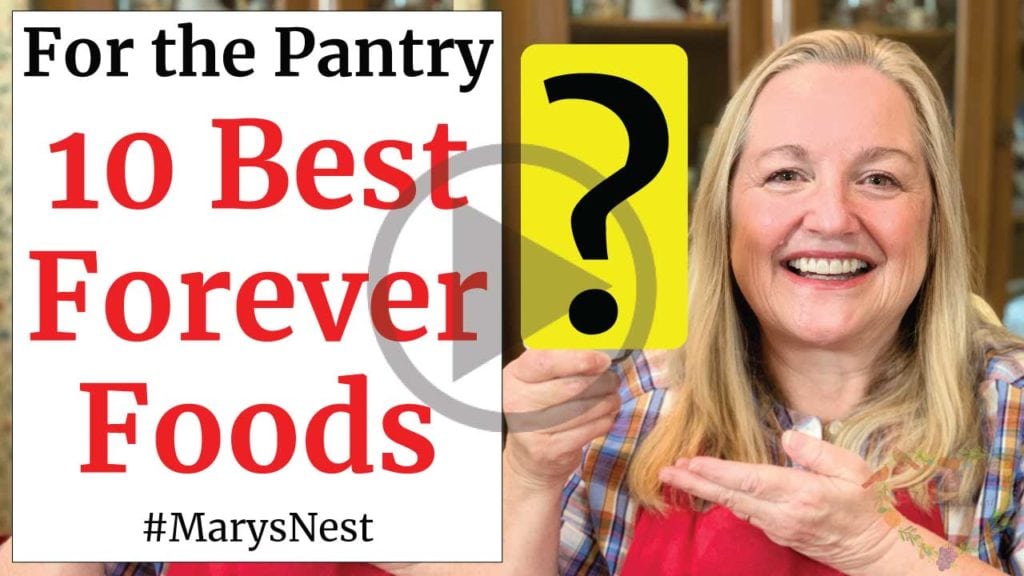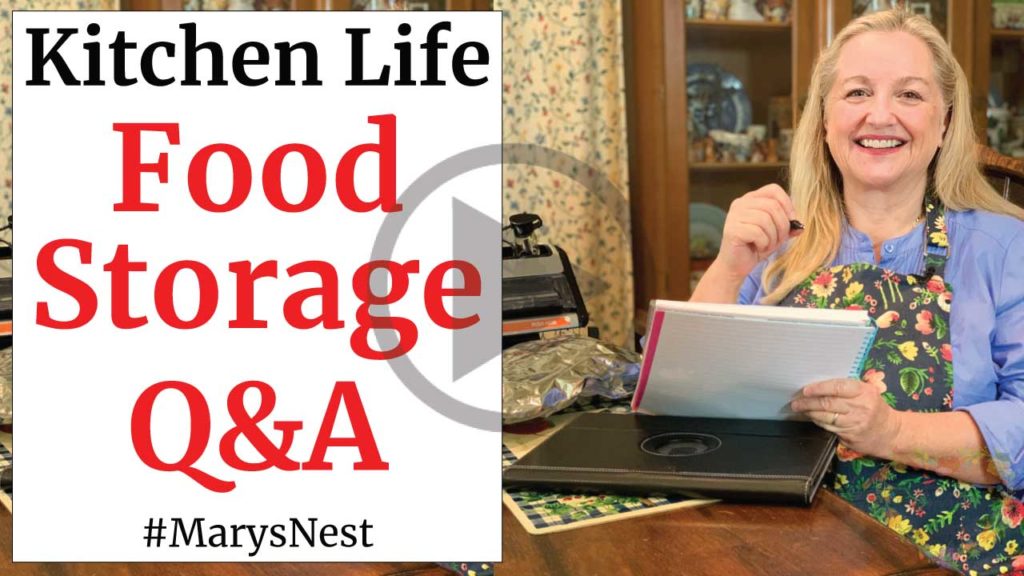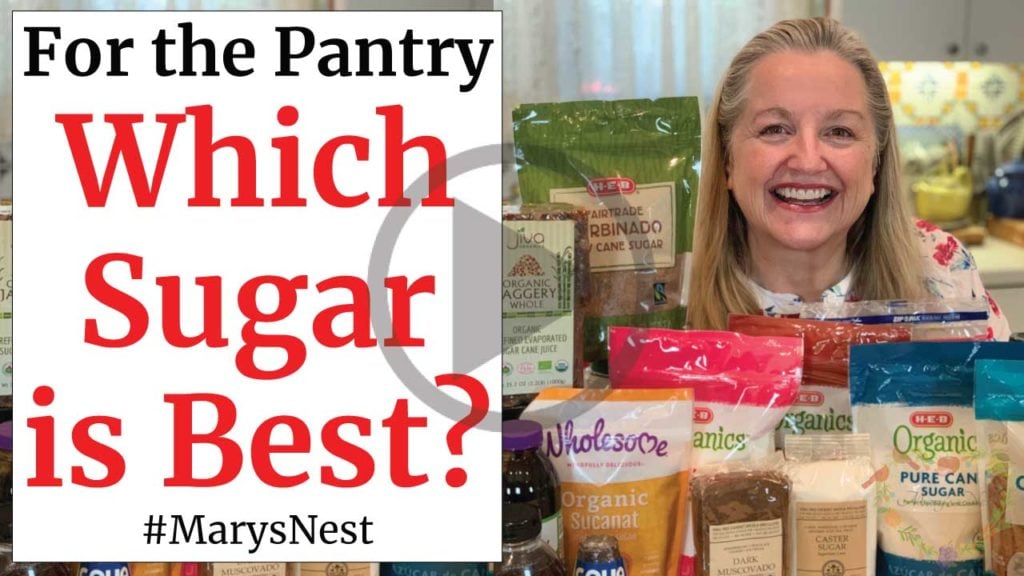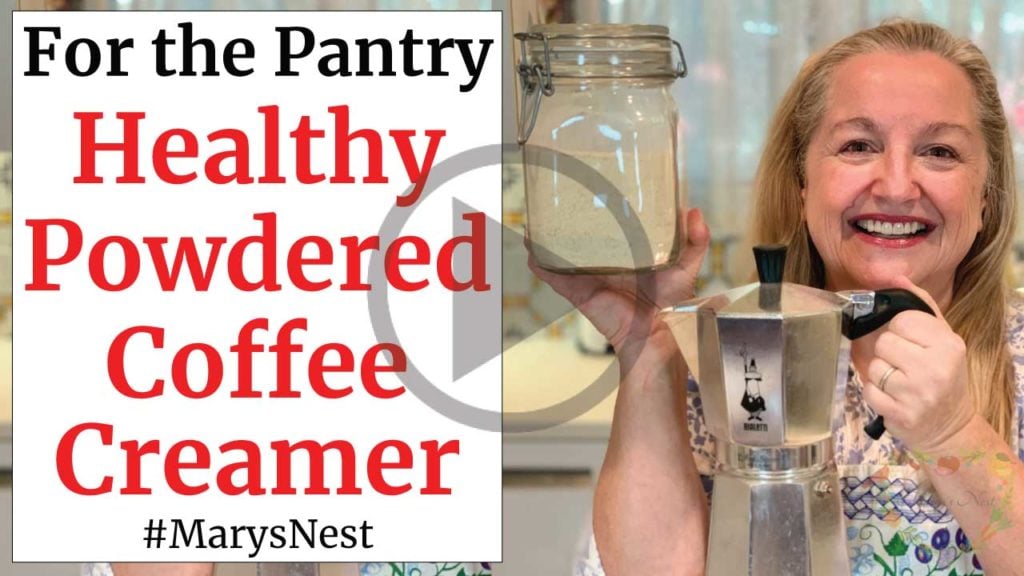Learn about the Essential Whole Grains for Your Prepper Pantry with my detailed video and this in-depth blog post covering:
- Ancient Grains
- Modern Grains
- Gluten-Free Grains
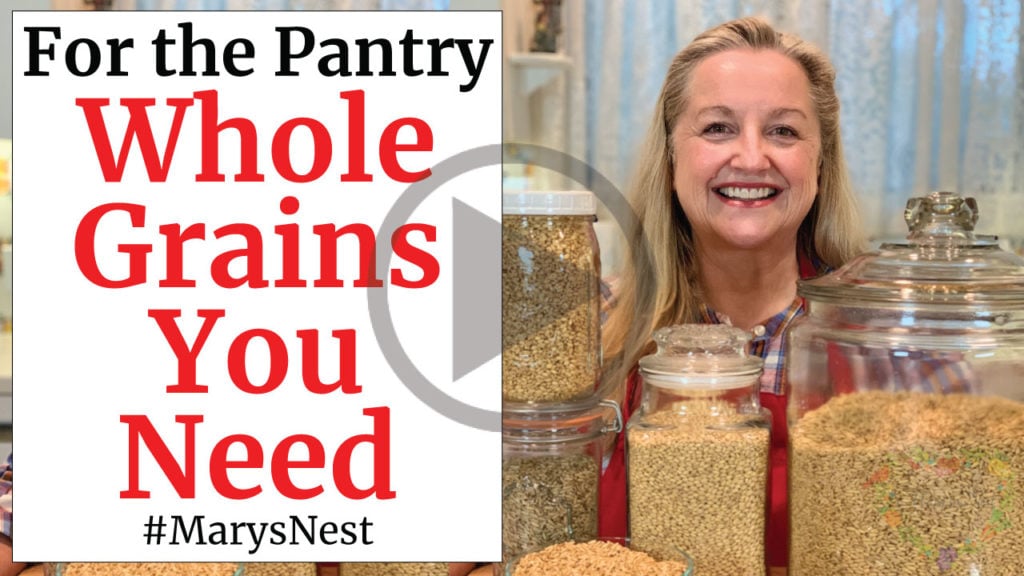
Affiliates note: As an Amazon Associate I earn from qualifying purchases. My content may contain affiliate links to products and services. If you click through and make a purchase, I’ll receive a small commission. It does not affect the price you pay.
Table of Contents
- When a Whole Grain is Really a Grain
- When a Whole Grain is a Pseudocereal
- Ancient Grains
- Modern Grains
- Gluten Free Grains
- The Modern Pioneer Cookbook
- Just the Beginning
- Free 36-Page Pantry List eBook
- Hard Grains versus Soft Grains
- Get Started with Your Prepper Pantry Videos
- For More Information
- Shop for items used in this blog post or video
When a Whole Grain is Really a Grain
Any discussion about Whole Grains would not be complete without defining exactly what is a grain. The dictionary describes grain as “a seed or fruit of a cereal grass.” A seed! A fruit! I thought we were talking about grains? Well, that’s a great point. What makes a grain truly “a grain” is the fact that it is a seed from a cereal grass. And it’s the phrase “cereal grass” that is important.
When we think of whole grains (like Einkorn, Emmer, Spelt, modern whole wheat, oats, barley, millet, corn, and others) we are referring to cereal grasses. The US Forest Service says that out of the over 9,000 species of grasses around the world, 35 of those grasses are cultivated as cereals.
These are actually “grains,” but do we use the term a little loosely when referring to other foods that we use in the same way as real grains? Definitely!
When a Whole Grain is a Pseudocereal
We often call seeds like buckwheat a grain, but is it? Actually, since it is not a seed from a cereal grass, we classify buckwheat as a “pseudocereal.”
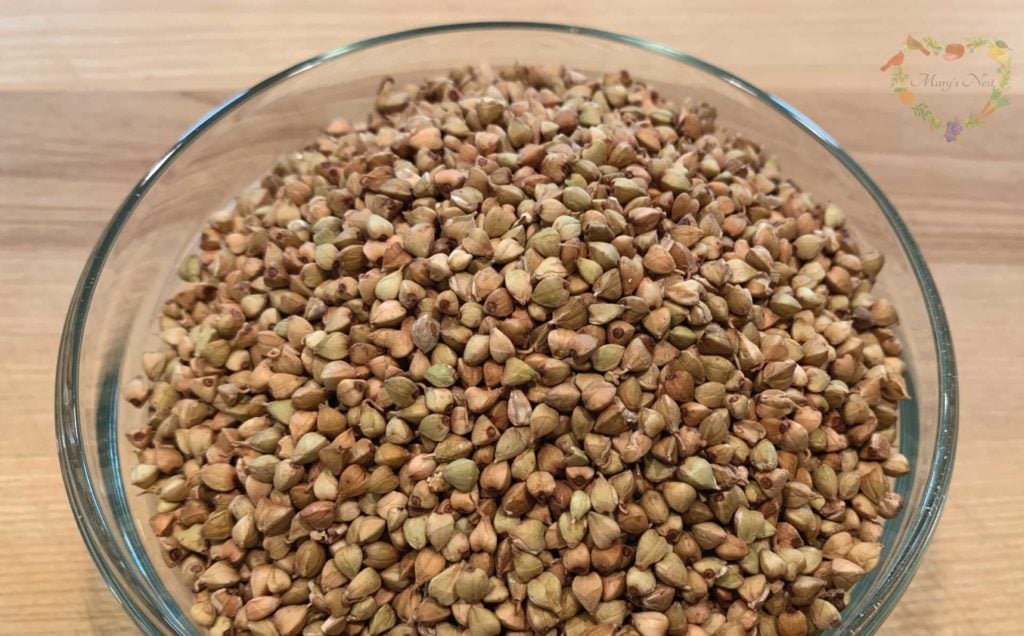
This term sounds funny since we often think of “cereals” as something that comes in a box from the grocery store, but the term pseudocereal means the seed is not from a cereal grass, but from something else. Pseudocereals are seeds that are consumed in the same way as cereal grains, but don’t grow on grasses.
Other common pseudocereals you might be familiar with are Quinoa and Amaranth. We’ll learn more about these pseudocereals, but the good news for those on gluten-restricted diets is that the following pseudocereals are gluten free:
- Amaranth
- Buckwheat
- Quinoa
Now are some real grains, as in cereal grasses, also gluten free? You bet! These grains are all gluten free too:
- Barley
- Corn
- Millet
- Oats
Ancient Grains
When we use the term Ancient Grains, we are referring to grains that occurred naturally in nature and have survived the ages. These are grains that have not been hybridized—have not been crossbred. Ancient Grains include:
- Einkorn
- Emmer
- Spelt
Ancient Grains vary in terms of their antiquity, but scientists generally believed that Einkorn is the most ancient of the grains. It is a diploid, which means it only has two sets of chromosomes. This means that Einkorn has two copies of each of its seven chromosomes, and its complete set totals 14 chromosomes.
Compare Einkorn to the much hybridized modern wheat that is a hexaploid, which means that it has six copies of each of its seven chromosomes. This means that modern wheat has a complete set of 42 chromosomes! You can learn more about the bread wheat genome in the following article:
- Science Daily: Bread wheat’s large and complex genome is revealed
Are Ancient Grains Lower in Gluten?
Interest in Ancient Grains has grown recently because some Ancient Grains are generally lower in gluten, while others contain no gluten. This is great news to people who have trouble digesting gluten.
Lower-gluten grains can often be tolerated by people who may only have a gluten sensitivity. Those who are completely gluten intolerant may be able to add gluten-free grains as part of their regular diet.
Eat Wheat
If you have been struggling with digesting gluten, Ancient Grains may be worth a try. I highly recommend reading the book Eat Wheat by John Douillard.
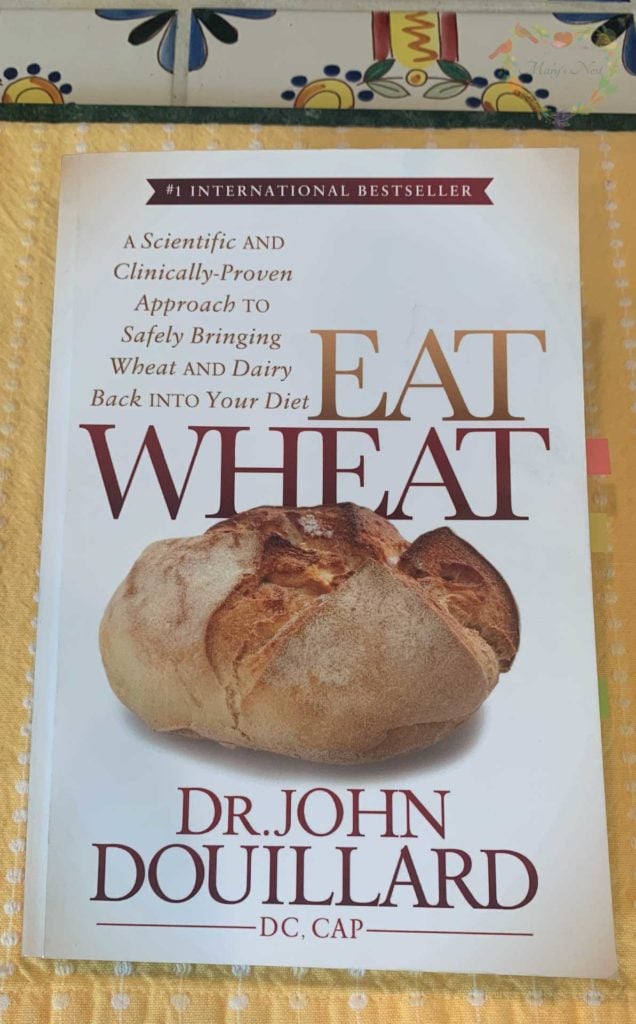
His groundbreaking book walks you through step-by-step how to heal your gut and then slowly reintroduce wheat back into your diet so that it can be tolerated and well digested.
Recipes with Einkorn and Spelt
To learn more about Einkorn and how to turn whole grain into flour, check out the video below.
And once you have your einkorn flour, be sure to bake this amazingly delicious Einkorn Apple Butter Cake. It’s perfect for topping off a Sunday Dinner on a chilly winter day.
And for another Ancient Grain recipe, try making this Sourdough Spelt Bread.
The Elusive Kamut
So what about Kamut, or Khorasan Wheat as it is also known? Kamut is an Ancient Grain with a delightful buttery flavor that is often called King Tut Wheat because scientists believe that this Ancient Grain was cultivated during the King’s reign of Egypt. To learn more about this fascinating grain that has a buttery taste, watch the following introductory video about Kamut.
And if this video piqued your interest, you can read more about this intriguing ancient grain over at The Story of Kamut.
And What About Barley?
A lot of our discussion about Ancient Grains and modern grains in my detailed essential grains video and this blog post revolves around wheat. But before we move on to modern grains, I want to bring your attention to barley. This grain has been around for a very long time, dating back to at least the time of the Egyptian Pharaohs!
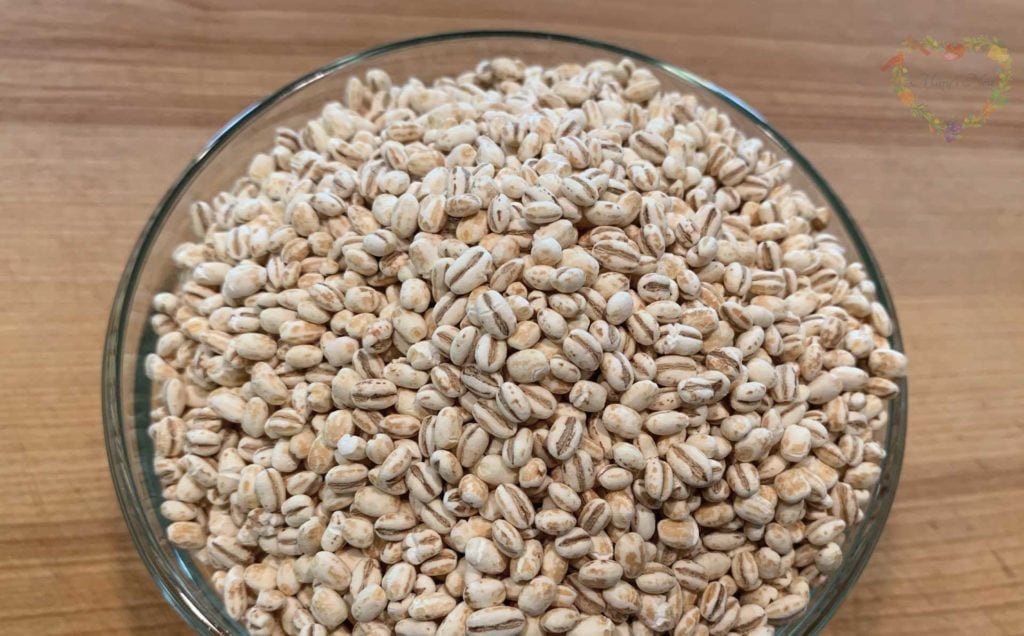
Now keep in mind that barley contains gluten, so it is not for those on a gluten-free diet. If you can eat gluten, I highly recommend rotating barley into your menu to replace white rice. Barley cooks up light and fluffy and needs nothing more than a toss with butter and salt to make a delicious side dish.
And who can resist a big bowl of Beef and Barley Soup on a cold winter’s night? To learn how to make this soup the most nutritious way, watch the following recipe video:
Barley is a soft grain, so you can store it in your Extended Pantry for at least eight years. (If you want to know more about the foods you can keep in your Four Corners Pantry, be sure to download my free 36-page pantry list.)
Modern Grains
As we move up the Whole Grains timeline, we come to our modern-day whole grains that are primarily whole wheat whole grains. We call them Modern Grains because during modern history, as agronomists began to understand grains, they also started to cross breed them.
But why did agronomist cross breed grains? Agronomists generally practiced cross breading to create whole grains and other crops that could grow better under certain conditions or resist specific diseases or insects.
Creating crops that can grow under harsh weather conditions and become resistant to various types of pests enabled farmers to produce more crops, feed more people and animals, and prevent famine.
Digestive Upset Caused by Modern Grains
Although hybridization brought many benefits to the world, unfortunately for some of us, our digestive systems may not have caught up to the evolution of these modern grains, and they may be hard to digest.
However, that is where proper preparation comes in. By soaking or sprouting these modern grains and then consuming them as is or turning them into flour to make bread, we may be able to digest them better and assimilate their nutrients easier.
Which Grains Are the Modern Grains?
Generally speaking, modern grains are those that have been hybridized, including varieties of whole wheat like:
- Hard Red Wheat
- Hard White Wheat
- Soft White Wheat
Grocery stores commonly sell these types of whole wheat grains and whole wheat flours, so they’re easy for us to find.
Hard Modern Wheats
Hard Red Wheat is what we often think of simply as whole wheat. If you buy a bag of whole wheat flour at the grocery store, chances are it’s Hard Red Wheat. Hard White Wheat is also becoming more common, and it is similar in nutrition to Hard Red Wheat, but it has been hybridized in a way to be lighter in color and create a lighter-baked good.
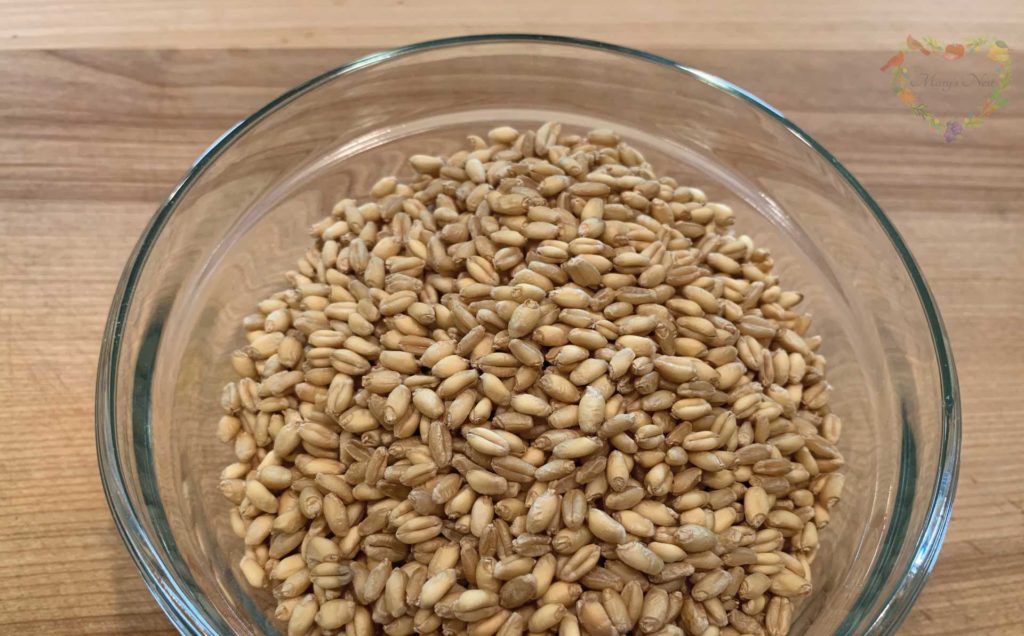
Hard White Wheat is often sold under the name White Whole Wheat. Although white is in the name, it is still a whole grain. When sold ground as flour, it is a 100% whole wheat flour. However, don’t confuse White Whole Wheat Flour with white All Purpose Flour or Bread Flour, both of which have had all their bran and germ removed.
As their name implies, both Hard Red Wheat and Hard White Wheat are hard grains, so they both have a very long shelf life when stored properly. They will last in your Extended or Prepper Pantry for at least 20 years. And since they are hard grains, they are also rich in gluten, making them well suited for bread baking.
Soft Modern Wheat
Now, what about Soft White Wheat? This is an excellent whole grain to learn more about and consider adding to both your pantry. As the name implies, Soft White Wheat is a soft grain, so its shelf life is shorter than hard grains. However, you can still store Soft White Wheat in your Extended or Prepper Pantry for at least eight years.
And yes, even though the name includes the word white, Soft White Wheat when ground into flour is not a white All Purpose flour. It is a 100% whole grain. But because it is a soft grain, it contains less gluten, so it is excellent to use for baking cakes and pastries where you want a light-textured baked good.
Where Does All Purpose Flour Fit In?
So where does All Purpose Flour or Bread Flour fit in with all of this? Both All-Purpose Flour and Bread Flour are made from modern wheats, but they have had all their bran and germ sifted out of them. This allows these flours to create lighter-baked goods than their 100% whole grain counterparts that still have all their bran and germ intact.
But what’s the difference between All Purpose Flour and Bread Flour? Usually, the difference is the protein—hence gluten—content. All Purpose Flour is typically a mixture of hard wheat and soft wheat, making it suitable for all types of baking. That’s why it’s called “all purpose.” On the other hand, Bread Flour usually has higher protein and is made from sifted hard wheat, making it best for bread baking.
Learn More About Modern Wheats
To learn more about modern wheat varieties, watch my Wheat Berries FAQ video. (Remember that wheat berries are another name for whole grain wheat.)
In the following recipe video, I’ll also show you how to make Whole Grain Blender Batter Bread with wheat berries. You don’t need a grain mill!
And so that you can better digest and assimilate the nutrients from modern grains, learn how to sprout grain and turn it into sprouted flour.
Gluten Free Grains
An interesting fact about gluten-free grains (and pseudocereals) is that most of them have been with us for a very long time and can be considered Ancient Grains.
When shopping for gluten-free grains, one of the easiest to find are oats. I highly recommend that you buy the whole oats that are also called oat groats. Oat groats are wonderful for turning into oatmeal as I show you in the video below, but you can also make the oat groats into a savory dish that you can serve in place of rice or other grains.
Be sure to stock your Extended or Prepper Pantry with oatmeal, so that you can make Oatmeal Bread and other recipes using the food in your long-term storage.
Tip: When you buy oats, make sure they are guaranteed to be gluten free if you must eat a 100% gluten-free diet.
In addition to oats, some other gluten-free grains include:
- Amaranth
- Buckwheat (and no, despite its name, buckwheat does not contain wheat)
- Dry corn (both the variety for popping and the varieties for turning into corn flour and cornmeal)
- Millet
- Quinoa
- Wild rice (which is actually a grain and not a rice)
You can grind gluten-free grain into flour for baking, but you can also use them to make tasty side dishes. If some of the less common gluten-free grains are new to you, I recommend that you buy small amounts of each and experiment with them to see what suits your tastes.
For example, millet is delightfully light when cooked. It’s similar in mouthfeel to white rice or couscous. On the other hand, whole grain buckwheat has a stronger flavor and chewy texture, and it can be an acquired taste. But buckwheat flour makes wonderful pancakes and waffles!
What About Rice?
I haven’t discussed rice here, but yes, it is gluten-free. But my reason for not discussing it in this blog post and video is because my focus here has been on whole grains.
Now, isn’t brown rice a whole grain? Definitely! But since we have been focusing on storing whole grains in our Extended or Prepper Pantry, I have purposefully left out brown rice because it is highly perishable.
Brown rice is highly perishable because it is rich in oils. Unfortunately, because it is classified as an oily food for storage purposes, brown rice cannot be stored in mylar bags with oxygen absorbers. When kept in an airtight container, oily foods, like brown rice, can be subject to the development of the anaerobic bacteria botulism, which is a toxin.
But you can certainly store brown rice in your Working Pantry. Just make sure to use your brown rice within six months of its purchase so that it is as fresh as possible.
Now, I realize some of you may be asking, “What about white rice?” Yes, you can certainly store white rice in your pantry, and it is well suited for long term storage. Since the oil has been polished out of it, you can store white rice in mylar bags with oxygen absorbers.
Just remember, since white rice is no longer a whole grain and has a somewhat limited nutritional profile, try to prepare your white rice using bone broth in place of water. And be sure to toss it with plenty of butter and mineral-rich sea salt!
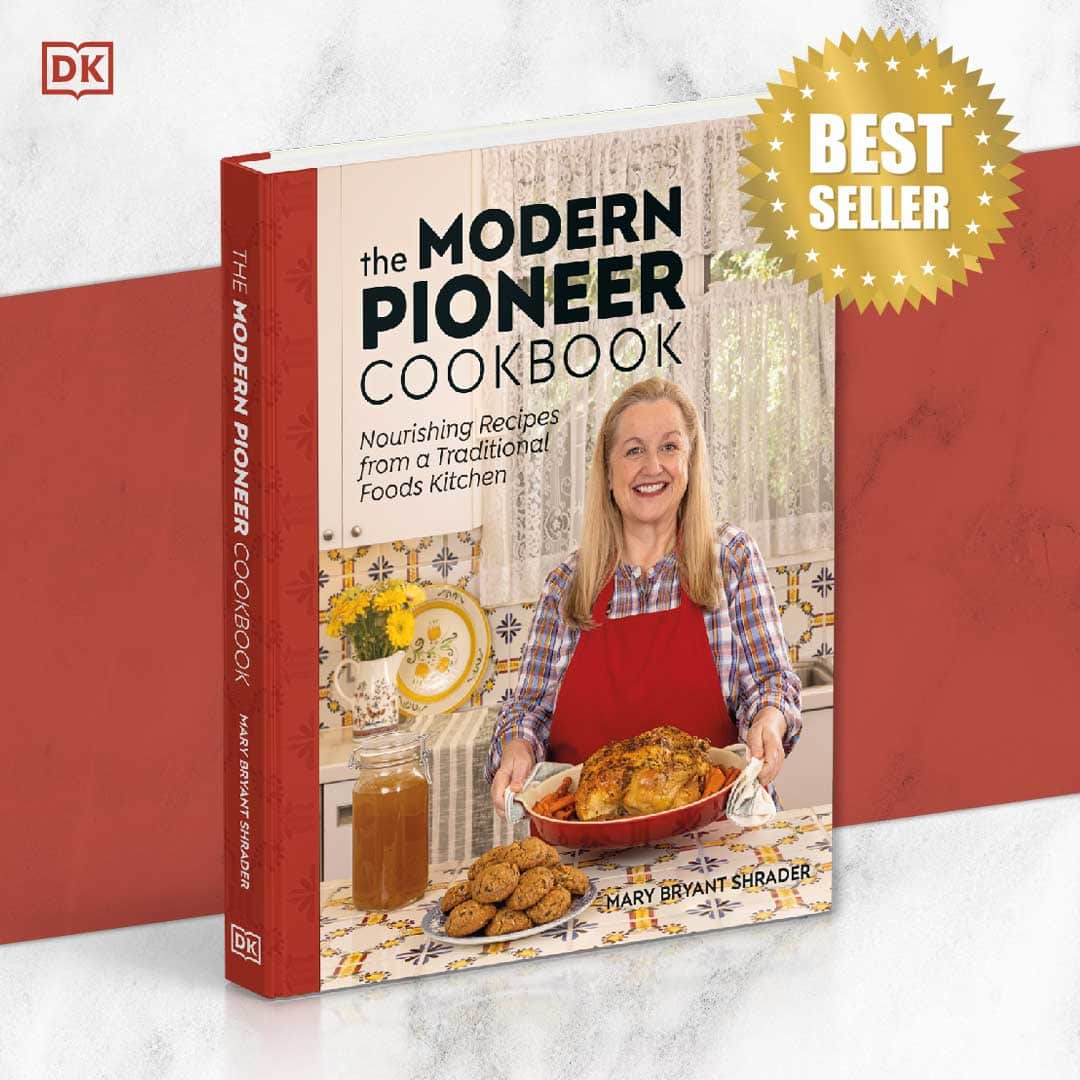
Order YOUR COPY Now!
The Modern Pioneer Cookbook
Seasonal ingredients, traditional techniques, and nourishing recipes. Over 85 traditional, from-scratch recipes! Discover for yourself how you can use simple ingredients and traditional techniques to cook the modern pioneer way.
Just the Beginning
Today, I have shared with you the essential grains that I like to stock in my Extended or Prepper Pantry, but it’s really just the beginning. There are so many varieties of grains that it can make a person’s head spin!
If there are grains that I have not mentioned here, such as Sorghum, Teff, or others, be sure to research these grains and see if they are ones you would like to incorporate into your diet.
A great place to start your research is at the Whole Grains Council, which covers grains from A to Z!
Free 36-Page Pantry List eBook
If you haven’t already done so, be sure to download your FREE 36-page Essential Traditional Foods Four Corners Pantry List. Not only do I walk you through all the whole grains you’ll need to stock in your pantry, but I also list everything you’ll need to stock your Four Corners Pantry with real food.
And this pantry list is not just a list. I share lots of links to videos and printable recipes where I teach you about traditional foods and how to prepare them. I also include quick little tidbits of useful information, which are especially handy when you take the list with you to the grocery store.
When we talk about whole grains for our Prepper Pantry, it’s important to know what we mean when we use the term pantry. For me, I generally use the term the Four Corners Pantry. This refers to the four areas where most home cooks store food:
- The Working Pantry (what you access on a regular basis)
- The Refrigerator
- The Freezer
- The Extended Pantry (what we often call the Prepper Pantry)
Your Extended Pantry is where you store all the non-perishable foods that you use to restock your working pantry. Your Extended Pantry is where you will be keeping the whole grains you decide to stock up on. And then as you need them, you will transfer them in smaller portions to your Working Pantry.
Hard Grains versus Soft Grains
When it comes to storing grains and pseudocereals in your Extended Pantry and your Working Pantry, you’ll need to know which grains are hard grains and which are soft grains. I’ve discussed this briefly above when mentioning the various individual grains, but I wanted to share a bit more detail here and provide you with a helpful resource to learn more.
The two short lists below provide you with the basic Hard Grains and Soft Grains to get you started. Be sure to check out the Utah State University Extension Service’s free food storage booklet that shares very helpful information about whole grains and all kinds of foods, as well as how best to store them.
Hard Grains
- Buckwheat
- Dry Corn
- Einkorn
- Emmer (Farro)
- Hard Red Wheat
- Hard White Wheat
- Kamut
- Millet
- Spelt
Soft Grains
- Barley
- Oats
- Quinoa
- Rye
- Soft White Wheat
Grind Your Own Flour with the Mockmill
When it comes to storing whole grains, you can certainly cook them as you would rice, but what if you want to grind your whole grain to make your own fresh flour? Well, there are a number of ways to grind grain, including:
- A hand crank grain mill (great for building up muscle strength!)
- A high-speed blender with a special canister for grinding grain
- An electric grain mill (my favorite choice!)
When it comes to electric grain mills, after I did A LOT of research, I decided to buy a Mockmill. And am I so happy I did! The Mockmill is a very affordable but beautifully crafted German made mill that stone grinds grain with settings ranging from 1 to 10—fine to coarse ground grain.
- Learn more about Mockmill Stone Grain Mill products, including Ancient Grains, like Einkorn, Emmer, and Spelt.
You can see me unbox and try out the Mockmill 100 Grain mill in the following video.
If you would like to learn even more about the Mockmill or how to grind grain with and hand crank grain mill or a high-speed blender, be sure to watch the video below where I test out all three!
Get Started with Your Prepper Pantry Videos
If you are new to prepping your pantry, not to worry. I’ve got you covered with the Ultimate Prepper Pantry Series! I have left nothing to chance. I share how to stock your pantry with real food. No need to buy any fancy (and dare I say expensive) freeze-dried or dehydrated food. I also show you how to do this on a budget of $5 per week! And I even share with you the 10 Best Forever Foods that you can set aside as survival foods in the event of a severe emergency.
So don’t worry if you haven’t started stocking your pantry. It’s never too late, and I show you how to do this little by little. No panicking, no hoarding. Just a sensible plan that walks you through week-by-week to get you where you need to be within one year.
So don’t delay! By this time next year, you can have a fully stocked Prepper Pantry and be prepared for whatever comes your way: bad weather, illness, or job loss. Things might be challenging from time to time, but at least you and your family will be well fed. And everyone does better coping with unexpected events on a full stomach!
Prepper Pantry Storage Videos
I share the best long-term storage solutions for your Prepper Pantry in the videos below, including how best to store whole grains.
More Essentials to Store in Your Prepper Pantry
Wondering which are the Essential Sugars to store in your Prepper Pantry? If so, be sure to watch the video below, where I cover not only actual whole sugars but also a host of other sweeteners.
I created my detailed Essential Sugars video after all the questions I received about sweeteners from my Healthy Powdered Coffee Creamer recipes. If you enjoy coffee (like me!), you’ll enjoy making the following coffee creamers.
For More Information
To learn more about all types of grains including Ancient Grains, Modern Grains, and Gluten Free Grains, be sure to visit the Oldways Whole Grains Council.
Stay in Touch with Mary’s Nest
- Subscribe to My YouTube Channel for Traditional Foods Videos (Free) - When you subscribe, be sure to click on the notification bell that will let you know each time I upload a new video.
- Subscribe to Mary’s Traditional Foods Newsletter (Free) - Get a free 36-page eBook for signing up: How to Stock Your Essential Traditional Foods Four-Corners Pantry.
- Join the Traditional Foods Kitchen Academy (Optional Paid) - For more detailed videos and exclusive members-only perks, join my YouTube membership community.
- Order The Modern Pioneer Cookbook (Optional Paid) - Get a printed book of Mary's nourishing recipes from a Traditional Foods Kitchen. This bestselling cookbook is published by Penguin Random House with their DK imprint.
I look forward to having you join me in my Texas Hill Country Kitchen!
Shop for items used in this blog post or video
Favorite Whole Grains
- Barley
- Einkorn Berries
- Emmer (Farro)
- Hard Red Wheat Berries
- Hard White Wheat Berries
- Kamut Berries
- Millet
- Oat Groats
- Quinoa
- Rye Berries
- Soft White Wheat Berries
- Spelt Berries
Favorite Food Storage and Prepper Pantry Supplies
- 5 Gallon Buckets w/ Lid
- Bucket Lid Opener Tool
- Gamma Lids – White
- Gamma Lids – Multi-Colored
- 5 Gallon Mylar Bags
- 1 Gallon Mylar Bags
- Zipper Mylar Bags
- Half Gallon Canning Jars
- Leak Proof/Air Tight Jar Lids
- 300CC Oxygen Absorbers
- 500CC Oxygen Absorbers
- 5g Silica Gel Packs
- 10g Silica Gel Packs
- Handheld FoodSaver with Docking Port
- Handheld FoodSaver
- FoodSaver Jar Adapter Kit
- FoodSaver Vacuum Sealer
- Bay Leaves
Favorite Kitchen Supplies
- Favorite Aprons
- Spice Grinder
- Countertop Burner (On my kitchen island in many recipe videos.)
- Handheld Vacuum Sealing System
- Vacuum Lids
- Whisk
- Silica Gel Packets (Helps keep moisture from building up in your mix)
- Cast Iron Dutch Oven
- 8-Quart Slow-Cooker
- Fat Separator (Clever kitchen device to help you decant bone broth)
- Flour Sack Towels
- pH Strips (Helps you check on the acidity of your vinegar)
Amazon Shop and Shopping Guide
- Visit Mary’s Nest Amazon Shop
- Visit my Shopping Guide page
Get up to 15% off for stocking your Traditional Foods Pantry and equipping your Modern Pioneer Kitchen, including discounts from US Wellness Meats, Farmhouse Teas, Lehman's, Masontops, Cultures for Health, Survival Garden Seeds, Redmond Real Salt, Plan to Eat, and More!
